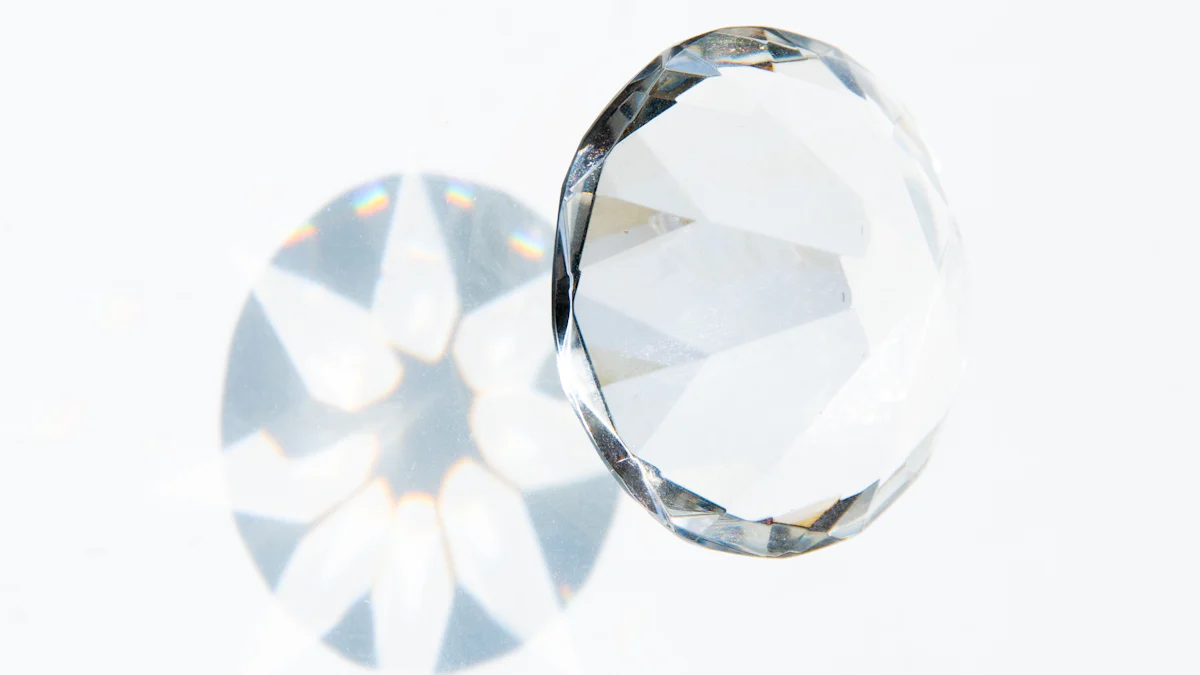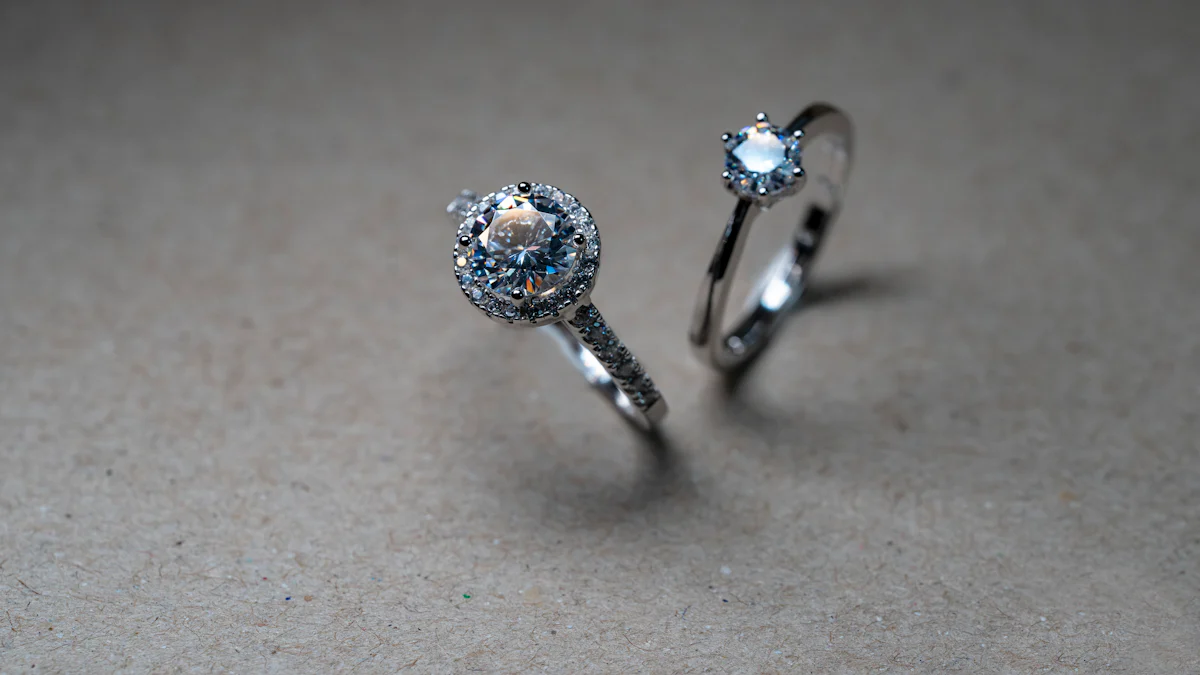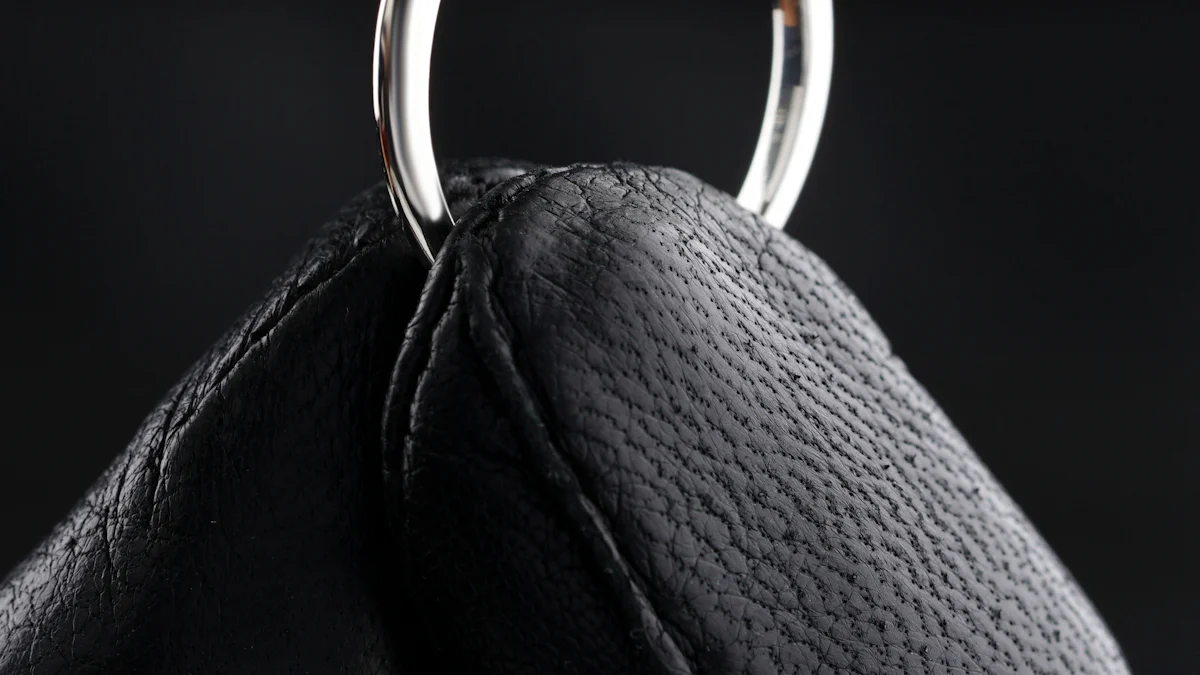Comparing 1 ct Diamonds Prices and Quality in 2025

Buying a 1 carat diamond in 2025 requires more than just a budget. You need to understand how factors like cut, color, clarity, and carat weight impact its value. These elements, known as the 4Cs, help you make informed decisions and avoid overpaying. Prices for 1 ct diamonds vary widely. For example, premium grades like D/FL have risen to $12,351, while lower grades like J/SI1 dropped to $2,641. Knowing these trends ensures you get the best deal. So, how do prices and quality differ across retailers? Let’s explore.
The Diamond Market in 2025

Trends in 1 Carat Diamond Prices
Factors Driving Price Fluctuations
In 2025, several factors influence the price of 1 carat diamonds. Production challenges in major mining regions like Botswana and Russia have reduced supply. Rising labor costs and disputes further strain production. These issues, combined with growing demand for luxury goods, push diamond prices higher. Ethical sourcing concerns also play a role. Companies are rethinking operations to meet consumer expectations, which can increase costs.
You’ll notice that transparency and trust dominate the diamond market. Retailers now educate buyers about grading processes and offer traceability for every diamond. This shift builds confidence but may also affect pricing. Personalization trends, especially among Gen Z, add another layer. Unique designs and custom cuts often come with premium price tags.
The Impact of Supply, Demand, and Global Markets
Global economic conditions heavily influence 1 carat diamond prices. A growing economy boosts demand for luxury items, including diamonds. However, limited mining activity creates a supply-demand imbalance. As of January 2025, natural diamond prices reflect this trend, with strong demand driving up costs.
Lab-grown diamonds, on the other hand, offer a more affordable alternative. Their rising popularity, projected to account for 21.3% of the market, adds competition. This diversification helps stabilize prices in some segments.
Natural vs. Lab-Grown Diamonds
Price Differences Between Natural and Lab-Grown Diamonds
Lab-grown diamonds have revolutionized the market. In 2025, they cost up to 90% less than natural diamonds. For example, a lab-grown 1 carat diamond might be priced at $1,000, while a natural counterpart could exceed $10,000. This affordability makes lab-grown options attractive to budget-conscious buyers.
| Diamond Type | Price Comparison | Price Decline Over Past Year |
|---|---|---|
| Lab-Grown Diamonds | 83% less | -15.73% |
| Natural Diamonds | Original Price | -9.66% |
Resale Value Considerations for Buyers
When considering resale value, natural diamonds hold an edge. Their rarity and historical significance make them a better long-term investment. Lab-grown diamonds, while affordable, lack the same resale appeal. If you’re looking for value retention, natural diamonds remain the safer choice.
Ethical and Sustainable Diamonds
Consumer Demand for Ethical Sourcing
Ethical sourcing has become a priority for buyers. You want assurance that your diamond is conflict-free and environmentally responsible. Retailers now use blockchain technology to provide traceability, ensuring ethical practices. This transparency builds trust and aligns with consumer values.
How Sustainability Influences Diamond Prices
Sustainability impacts 1 carat diamond prices significantly. Companies adopting eco-friendly practices often charge a premium. These diamonds appeal to buyers willing to pay more for ethical and sustainable options. As this trend grows, expect sustainable diamonds to command higher prices in the market.
Assessing the Quality of 1 ct Diamonds
The 4Cs: Cut, Color, Clarity, and Carat
How the 4Cs Determine a Diamond's Value
When evaluating a 1 carat diamond, the 4Cs—cut, color, clarity, and carat—are your ultimate guide. Each factor plays a unique role in determining the diamond value. The cut is the most critical. It directly affects how the diamond reflects light, creating brilliance and fire. A poorly cut diamond, no matter its size or clarity, will appear dull.
Diamond color also matters. You should aim for a diamond that looks white or colorless to the naked eye. Diamonds in the G-I color range often provide the best balance between appearance and cost. Clarity, on the other hand, measures how free the diamond is from inclusions and blemishes. While higher clarity grades may seem appealing, many Slightly Included (SI) diamonds are eye-clean and offer excellent value. Lastly, carat weight influences size but doesn’t always equate to better quality. A smaller, well-cut diamond can outshine a larger, poorly cut one.
Why Cut Is the Most Critical Factor for Brilliance
The cut determines how well your diamond interacts with light. A well-cut diamond maximizes brilliance, fire, and scintillation, making it visually stunning. Poorly cut diamonds fail to reflect light effectively, appearing lifeless. If you prioritize one factor, make it the cut. It’s the key to a diamond’s sparkle and overall appeal.
Certifications and Grading Reports
GIA vs. AGS: Key Differences and Reliability
Certifications ensure you’re getting what you pay for. The Gemological Institute of America (GIA) and the American Gem Society (AGS) are the most trusted grading authorities. GIA uses the 4Cs to grade diamonds, focusing on proportions and providing detailed diagrams. AGS, however, emphasizes light performance and includes ASET images in its reports. Both are reliable, but GIA is known for stricter grading standards, while AGS excels in assessing cut quality.
| Feature | GIA | AGS |
|---|---|---|
| Grading System | 4Cs (Carat, Cut, Clarity, Color) | 0-10 scale for each 4C |
| Cut Standards | Focus on proportions | Light performance metrics |
| Report Layout | Diagrams of proportions | ASET image for light performance |
The Role of Fluorescence and Other Grading Factors
Fluorescence can influence both the appearance and price of a diamond. Diamonds with no fluorescence often command higher prices. However, faint fluorescence can enhance lower color grade diamonds, making them appear whiter. For higher color grades, fluorescence might reduce value slightly. Understanding these nuances helps you make informed choices.
Common Misunderstandings About Diamond Quality
Myths About Inclusions and Clarity
Many buyers mistakenly believe that fewer inclusions always mean a more beautiful diamond. This isn’t true. Some inclusions are invisible to the naked eye and don’t affect the diamond’s appearance. Another myth is that SI diamonds are always eye-clean. While many are, some may have visible inclusions. Remember, clarity doesn’t guarantee sparkle. The cut plays a bigger role in brilliance.
Why Size Isn’t the Only Factor to Consider
It’s easy to think that bigger is better, but size isn’t everything. Larger diamonds are rarer, but their quality depends on other factors like cut, color, and clarity. Slight differences in carat weight, known as “magic sizes,” can lead to significant price jumps. A smaller, well-cut diamond often looks more impressive than a larger one with poor proportions. Focus on overall quality, not just size.
Comparing 1 Carat Diamond Prices Across Retailers

Traditional Brick-and-Mortar Retailers
Pricing Strategies and Added Value Services
When you visit traditional diamond retailers, you’ll notice their pricing strategies often include markups to cover overhead costs like rent and staffing. However, these retailers justify higher prices by offering added value services. For instance, many provide lifetime warranties, free resizing, and cleaning services for your 1 carat diamond ring. These perks can make your purchase feel more secure and worthwhile.
Here’s a quick look at the average retail prices for 1 carat diamonds in 2025:
| Clarity | Color | Retail Price (D Color) | Retail Price (E Color) | Retail Price (F Color) |
|---|---|---|---|---|
| SI1 | D | $5,071 | $4,672 | $4,829 |
| VS2 | D | $6,231 | $5,534 | $5,665 |
| VS1 | D | $7,118 | $5,986 | $6,151 |
| VVS2 | D | $7,986 | $6,317 | $6,379 |
| IF | D | $10,420 | $8,078 | $7,003 |
Benefits of In-Store Consultations and Warranties
Shopping in-store allows you to see and feel the diamond before buying. You can examine its brilliance and quality under professional lighting. Retailers often provide consultations with gemologists who guide you through the 4Cs, ensuring you understand the value of your 1 carat diamond ring. Additionally, warranties offered by brick-and-mortar stores give you peace of mind, covering repairs or replacements for years to come.
Online Retailers and E-Commerce Platforms
Competitive Pricing and Transparency
Online platforms have revolutionized the diamond market by offering competitive pricing. Without the overhead costs of physical stores, they pass the savings on to you. Many e-commerce sites also excel in transparency, using advanced tools to educate buyers.
- AI technologies analyze diamond characteristics like cut, clarity, and color.
- Pricing analysis tools help you compare diamond prices across vendors.
- Detailed insights ensure you understand the quality of your 1 carat diamond.
The Role of Virtual Tools Like 3D Imaging
Virtual tools make online shopping more interactive. Features like 3D imaging allow you to view your 1 carat diamond ring from every angle. Some platforms even offer augmented reality, letting you “try on” 1 carat diamond engagement rings virtually. These innovations make online shopping convenient and engaging.
Branded Cuts and Exclusive Collections
How Branded Cuts Influence 1 Carat Diamond Price
Branded cuts often come with premium price tags. These unique designs enhance the diamond’s brilliance and appeal, making them highly sought after. However, they can cost more than traditional cuts like round or princess.
| Diamond Cut | Price Difference Compared to Round Cut |
|---|---|
| Oval | 2 to 10% lower |
| Princess | 14 to 24% lower |
| Cushion | 15 to 25% lower |
| Radiant | 16 to 25% lower |
Examples of Exclusive Collections in 2025
In 2025, exclusive collections like Tiffany’s True Cut or De Beers’ Lightbox Lab-Grown Diamonds dominate the market. These collections focus on ethical sourcing and innovative designs, appealing to modern buyers. If you’re looking for a 1 carat diamond engagement ring that stands out, these branded options are worth exploring.
The Role of Technology in Diamond Shopping
AI and Machine Learning in Diamond Selection
Personalized Recommendations for Buyers
Artificial intelligence (AI) has transformed how you shop for a 1 carat diamond. AI-powered tools analyze your browsing history, style preferences, and budget to offer tailored recommendations. This level of personalization simplifies your decision-making process and ensures you find a diamond that matches your unique taste.
For example, virtual try-ons let you see how a diamond looks in real-time, whether it’s set in a ring or pendant. These tools eliminate guesswork and help you visualize your purchase before committing.
| Technology | Description |
|---|---|
| Virtual Try-Ons | See a diamond’s appearance in real time with various settings using computational methods. |
| AI-Powered Recommendations | Get customized suggestions based on browsing and purchase history, desired settings, and style preferences. |
By leveraging AI, you can confidently choose a 1 carat diamond that fits your needs without feeling overwhelmed by endless options.
Enhancing Grading Accuracy with AI
AI also improves the accuracy of diamond grading. Advanced algorithms evaluate diamond attributes like cut, clarity, and color with unmatched precision. This eliminates human error and ensures consistent grading standards.
- AI-driven grading provides unbiased results, enhancing reliability.
- Machine learning refines accuracy over time, as the system processes more diamonds.
- This technology boosts consumer confidence by delivering consistent and trustworthy evaluations.
When you buy a diamond graded with AI, you can trust its quality and value.
Blockchain for Diamond Traceability
Ensuring Ethical Sourcing Through Blockchain
Blockchain technology ensures that your diamond is ethically sourced. It creates a secure digital ledger that tracks every step of a diamond’s journey, from the mine to the market. This transparency allows you to verify that your 1 carat diamond meets ethical and environmental standards.
- Stakeholders can view details about a diamond’s origin and attributes.
- Each transaction is recorded as a data block, forming a permanent digital record.
- This system prevents unethical practices and promotes accountability.
Building Consumer Trust with Traceability
Blockchain fosters trust by providing proof of ethical sourcing. Retailers can show you a diamond’s complete history, giving you peace of mind.
"Once this trust is established, providing an identifiable, authenticated provenance will build the trust and confidence in the upstream stakeholders and, says Kemp, 'consumers will have the peace of mind of knowing where their diamond comes from.'"
When you know the origin of your diamond, you can make informed decisions and support responsible practices.
E-Commerce and Price Transparency
How Online Platforms Increase Competition
E-commerce platforms have revolutionized the diamond market. They give you access to global vendors, breaking geographical barriers and increasing competition. This competition drives down diamond prices, ensuring you get the best deal for your 1 carat diamond.
- Online tools verify authenticity and ethical sourcing.
- Pricing analysis features let you compare diamond prices across multiple retailers.
- Transparency in the supply chain helps you understand the value of your purchase.
Convenience and Accessibility for Buyers
Shopping online offers unparalleled convenience. You can browse a wide range of diamonds from the comfort of your home. Virtual tools like 3D imaging and augmented reality make it easy to inspect a diamond’s quality and appearance.
- Access global markets to explore more options.
- Save time with faster transactions and streamlined processes.
- Enjoy personalized recommendations that simplify your search.
E-commerce platforms empower you to find the perfect 1 carat diamond at a competitive price, all while ensuring quality and ethical sourcing.
Understanding the dynamics of 1 carat diamond prices and quality in 2025 empowers you to make smarter decisions. Key takeaways include prioritizing cut for brilliance, choosing G-I color for value, and opting for VS1 or VS2 clarity to balance beauty and cost. Retailers, whether online or in-store, offer unique advantages, but online platforms often provide better transparency and competitive pricing.
To balance price and quality, focus on cut over other factors. Avoid overspending on clarity or color grades that don’t show visible differences. Ensure the diamond is certified by trusted organizations like GIA, and inspect it personally or through virtual tools.
Technology and certifications simplify your purchase. Certifications act as a diamond’s passport, detailing its unique attributes and ensuring fair value. Tools like AI-powered recommendations and blockchain traceability enhance trust and convenience. By leveraging these resources, you can confidently select a 1 carat diamond ring that meets your expectations for price, quality, and ethical sourcing.
FAQ
What is the best way to choose a 1 carat diamond ring?
Focus on the cut. A well-cut diamond sparkles brilliantly and enhances its beauty. Prioritize G-I color and VS1 or VS2 clarity for value. Always check certifications like GIA or AGS to ensure quality. Use online tools for transparency and compare prices across retailers.
Are lab-grown diamonds worth buying?
Yes, if you want affordability and sustainability. Lab-grown diamonds cost significantly less than natural ones and look identical. However, they lack strong resale value. If you prioritize ethical sourcing and budget, lab-grown options are excellent for a 1 carat diamond ring.
How can I ensure my diamond is ethically sourced?
Look for blockchain traceability. This technology tracks your diamond’s journey from mine to market. Retailers offering blockchain-backed diamonds provide proof of ethical sourcing. Certifications and retailer transparency also help you make informed, responsible choices.
Why is cut more important than carat weight?
Cut determines how a diamond reflects light, creating brilliance. A smaller, well-cut diamond often outshines a larger one with poor proportions. While carat weight affects size, it doesn’t guarantee beauty. Always prioritize cut for a stunning 1 carat diamond ring.
Should I buy a diamond online or in-store?
Online platforms offer competitive pricing, transparency, and virtual tools like 3D imaging. In-store shopping provides hands-on inspection and expert consultations. Choose based on your comfort level, but online retailers often provide better deals for a 1 carat diamond ring.
See Also
Comparative Analysis of All Around Diamond Ring Costs
Price Comparison of Various Diamond Necklace Designs
Essential Elements Influencing Diamond Ring Price Determination

